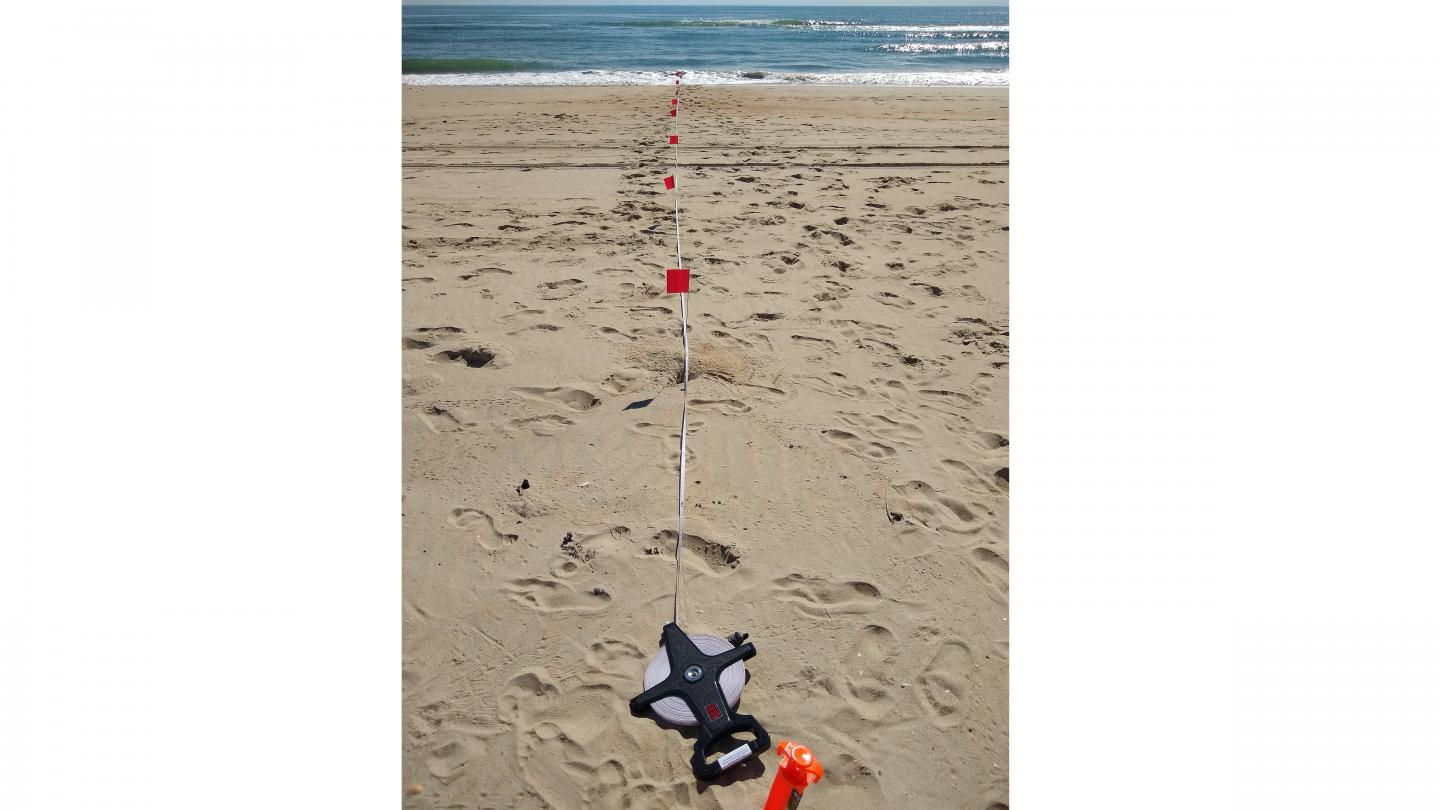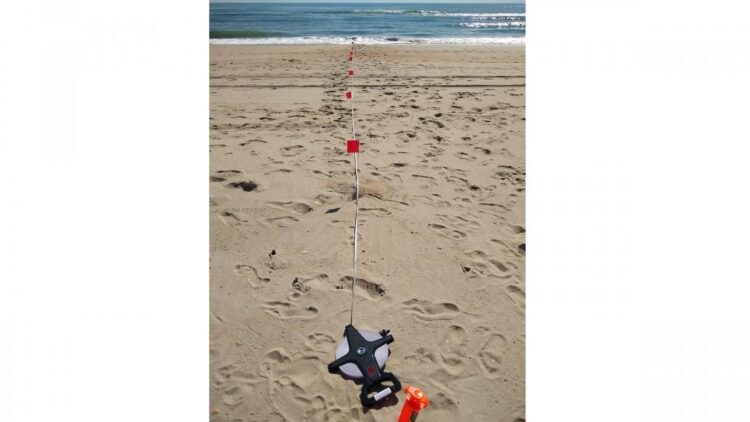Does wet sand affect how sound travels across a beach? Researchers set off to a coastal beach in North Carolina to test moisture levels and improve their models

Credit: Faith Cobb
MELVILLE, N.Y., December 10, 2020 — On a beach in North Carolina, researchers have been poking and prodding the sand to study how moisture levels affect sounds as they move across the environment.
Over short distances, even moderately wet sand reflects sound more like water does than as a solid surface does. Faith Cobb, from East Carolina University, and her team are looking into if the same is true for long-range sound propagation to develop numerical models that describe how sound travels across large coastal areas.
Their findings will be presented in “Characterization of sand moisture profiles for improved atmospheric acoustic modeling” as a part of the 179th Meeting of the Acoustical Society of America. This session will be presented Dec. 10 at 11:15 a.m. Eastern U.S. The meeting will be held virtually Dec. 7-10.
To understand how sounds originating offshore make it on land, factors that affect how the sound travels over long distances need to be accounted for. This includes myriad things, such as wind speed, wind direction, sea state, beach topography, temperate, and humidity, to name a few.
The researchers decided to focus on one aspect of how sounds travel across beaches: moisture in the sand. Scientists know moisture affects how much sound is absorbed by sand, and previous work had been conducted on artificial lake sand, but no one had tested the theory in coastal areas.
The scientists sampled sands at a relatively flat and uniform beach at several depths and tested them for their moisture content. This involved using moisture probes stuck into the sand, collecting samples to test the sand’s gravimetric water content and using an impedance tube to test the sand’s conductance.
While beach moisture is just one factor of many, the work will help researchers model the overall environment to understand how sound moves through the air in coastal areas.
###
MORE MEETING INFORMATION
USEFUL LINKS
Main meeting website: https:/
Technical program: https:/
Press Room: http://acoustics.
WORLDWIDE PRESS ROOM
In the coming weeks, ASA’s Worldwide Press Room will be updated with additional tips on dozens of newsworthy stories and with lay language papers, which are 300-500 word summaries of presentations written by scientists for a general audience and accompanied by photos, audio, and video. You can visit the site during the meeting at http://acoustics.
PRESS REGISTRATION
We will grant free registration to credentialed journalists and professional freelance journalists. If you are a reporter and would like to attend, contact the AIP Media Line at 301-209-3090. For urgent requests, staff at [email protected] can also help with setting up interviews and obtaining images, sound clips or background information.
VIRTUAL MEDIA BRIEFINGS
Press briefings will be held virtually during the conference. Credentialed media can register in advance by emailing [email protected] include your full name and affiliation in the message. The official schedule will be announced as soon as it is available and registered attendees will be provided login information via email.
ABOUT THE ACOUSTICAL SOCIETY OF AMERICA
The Acoustical Society of America (ASA) is the premier international scientific society in acoustics devoted to the science and technology of sound. Its 7,000 members worldwide represent a broad spectrum of the study of acoustics. ASA publications include The Journal of the Acoustical Society of America (the world’s leading journal on acoustics), Acoustics Today magazine, books, and standards on acoustics. The society also holds two major scientific meetings each year. For more information about ASA, visit our website at http://www.
Media Contact
Media Contact
[email protected]





